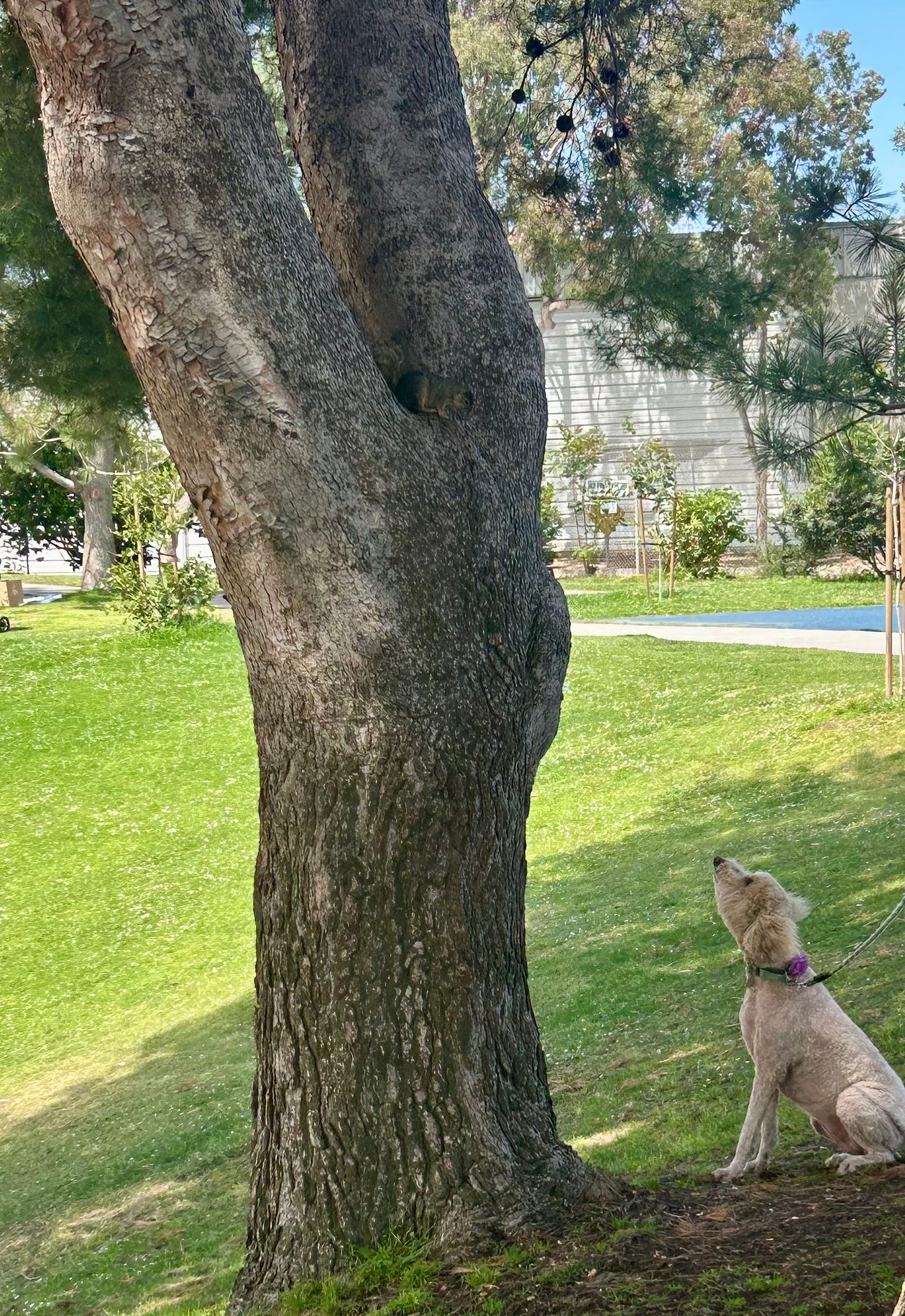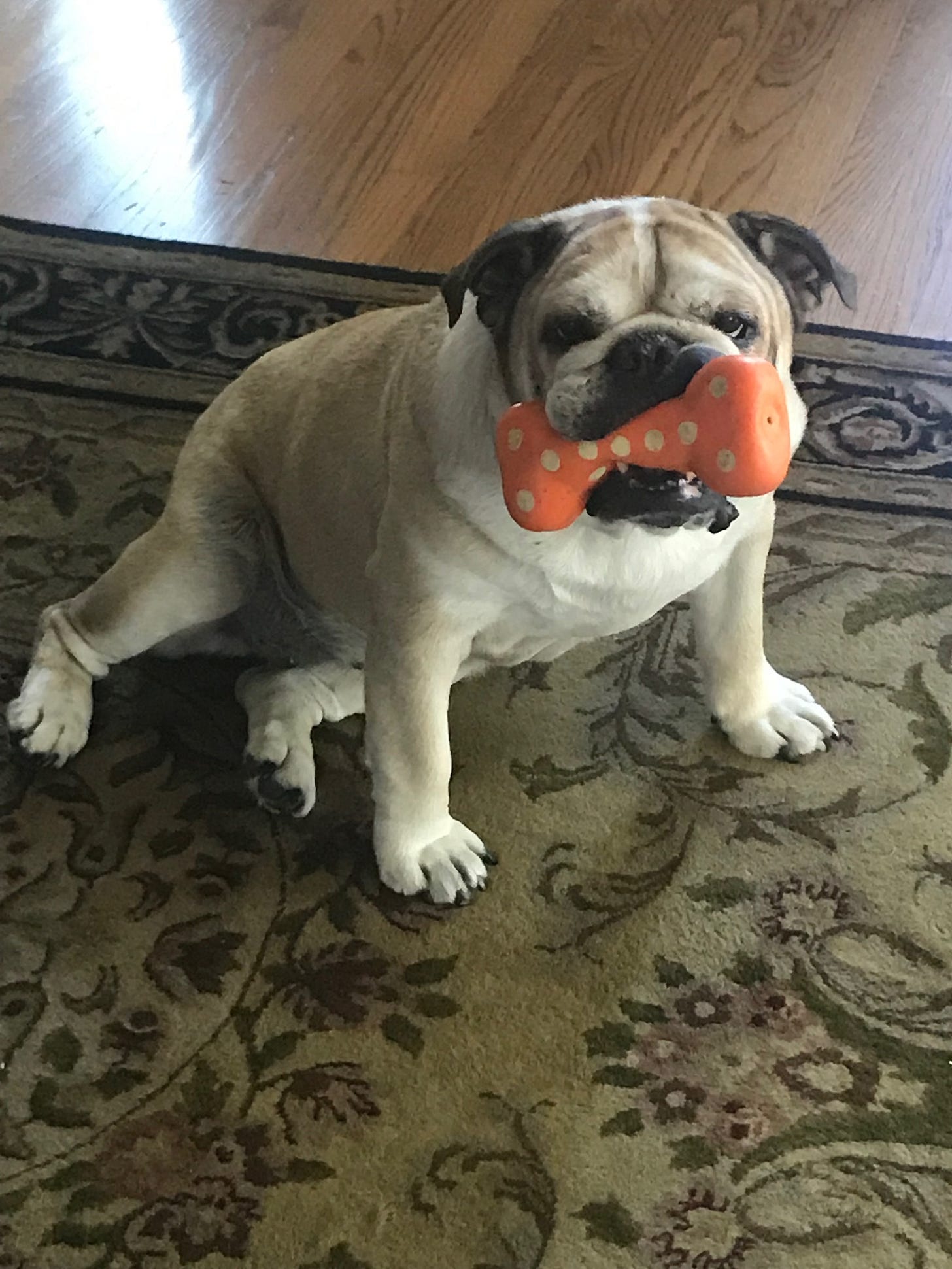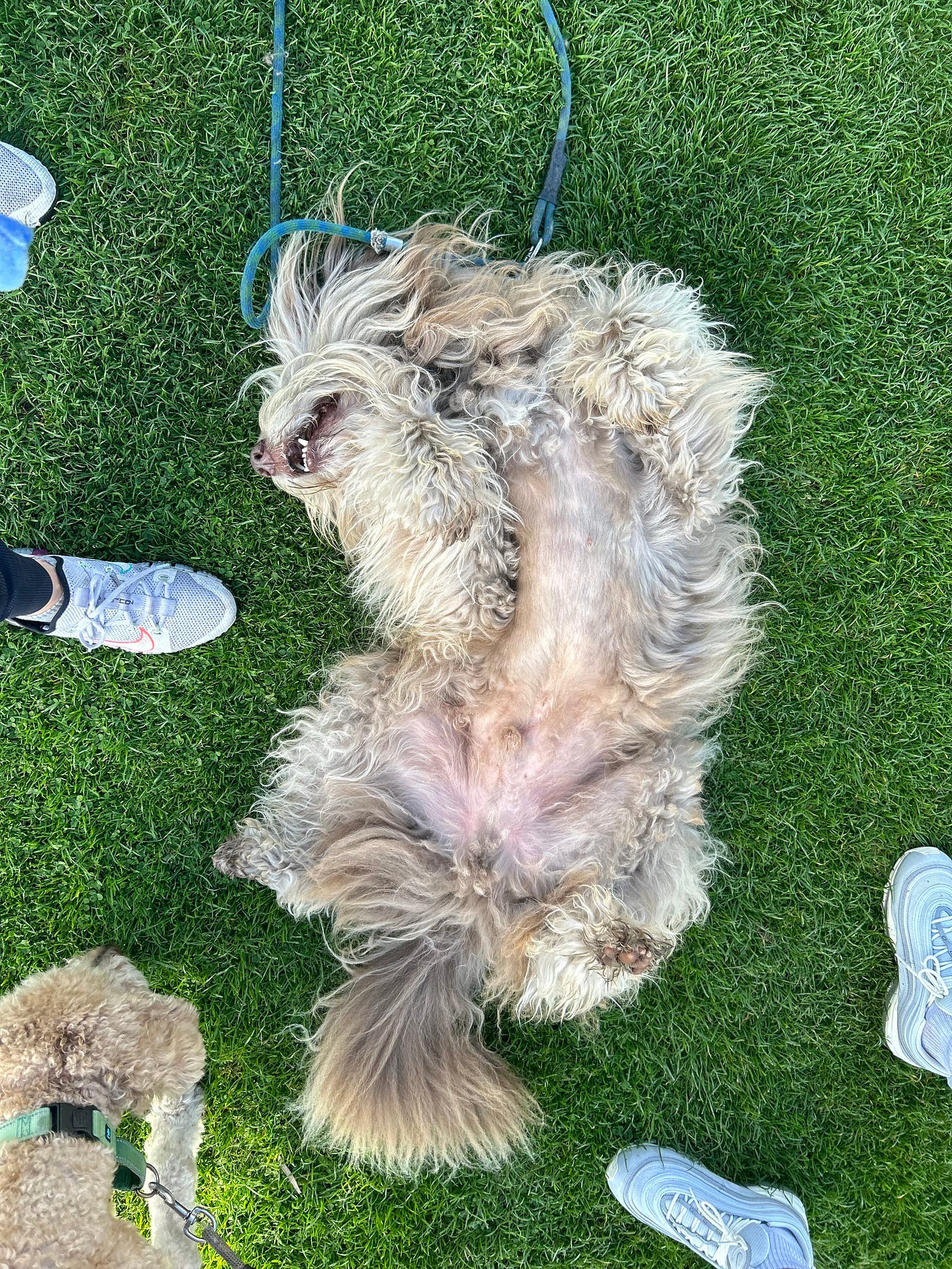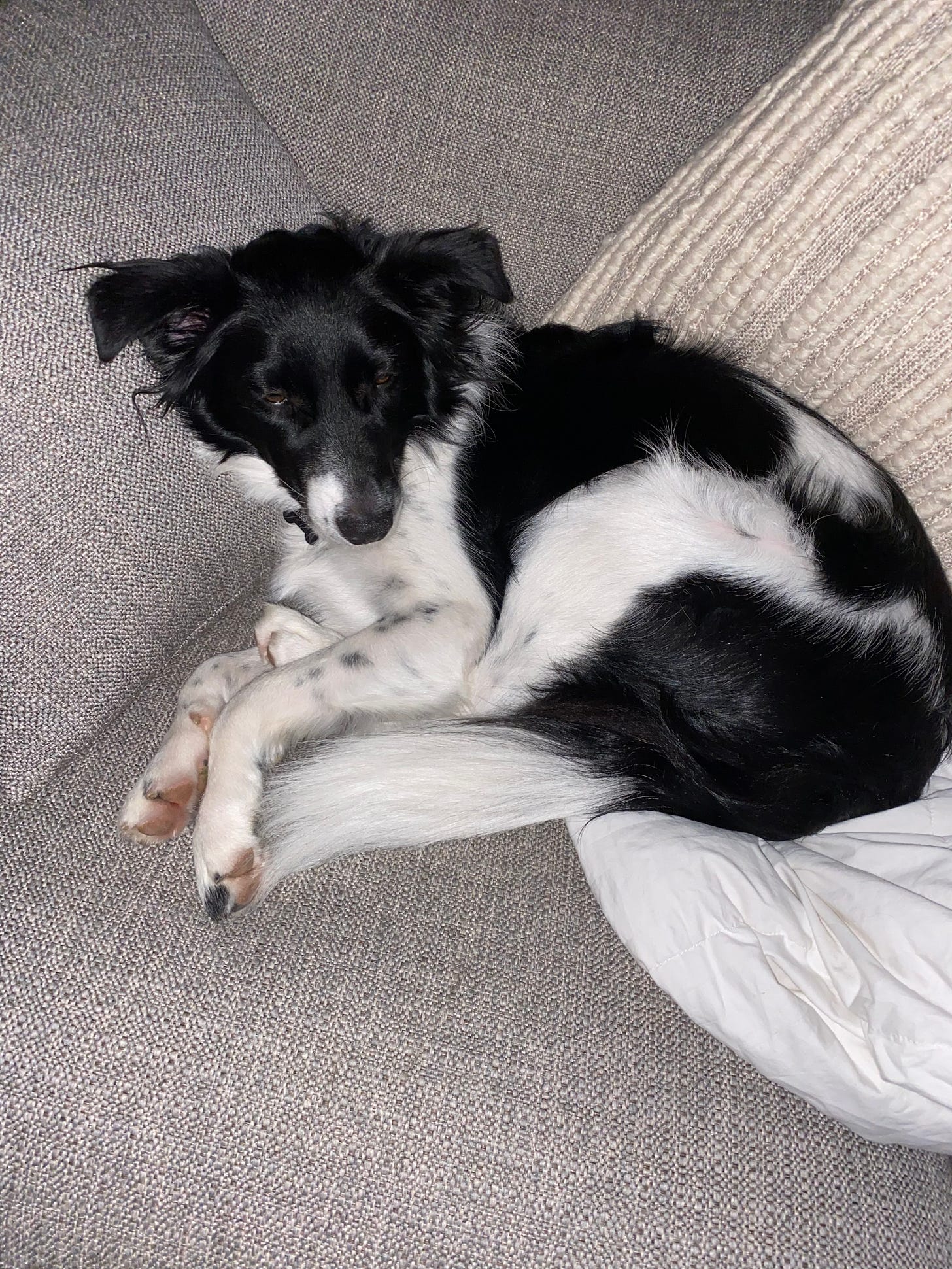By someone who’s met every kind of dog; from couch-loving Bulldogs to zoomie-fueled Border Collies and super-talkative mixed breeds.
Let’s face it: dogs can sniff out the truth about how you are feeling - and once you start paying attention - you realize they’re telling you how they feel also. Whether you're a new dog parent or a lifelong handler, knowing what happiness looks like in dogs is critical. Not just for their well-being, but for yours. Because a happy dog? That’s a whole vibe. It’s contagious.
So how do you know if your dog is actually thriving, not just existing? After years of working with pups of every shape and size, from shy rescues to diva doodles, here are my top 10 signs your dog is living their best life — plus what you can do if they’re not quite there yet.
1. The Full-Body Wiggle
You walk through the door and suddenly it’s like someone hit the "joy" button. The tail wags so hard the whole back end joins in. This is the ultimate doggie “I’m so happy you’re home!” greeting.
Pro tip: If your dog’s tail goes in wide, loose arcs or helicopter circles — that’s the gold standard. Tight, high wags? That could mean they’re alert or anxious, not necessarily happy.
2. They Sleep Like a Log
Dogs that feel safe and content sleep deeply and in hilarious, vulnerable positions — belly up, legs akimbo, drooling on your pillow. If they’re passed out in full trust mode, you’re doing something right.
Watch out for: Pacing, trouble settling, or hiding while sleeping can be signs of stress.
3. Zoomies on the Regular
The "zoomies" — aka Frenetic Random Activity Periods — are joyful outbursts that tell you your dog is feeling great. If they’re tearing across the yard like they’ve seen a squirrel in their dreams, they’re living it up.
Not all dogs zoom (some are more “ponder-and-sniff” types), but even a lazy stretch-‘n’-roll after breakfast can be a quiet version of the same joy.
4. They Look to You with Soft Eyes
A happy dog makes soft, blinking eye contact. Not the “I’m about to lunge” kind, but the “Hey, what’s next?” kind. Their gaze follows you around the house in a calm, trusting way.
Tip: Wide eyes with visible whites (aka “whale eye”) usually mean discomfort or fear — not contentment.
5. They’re Curious, Not Cautious
A happy dog explores! They sniff new things, trot into different rooms, poke their nose in your bag, follow you into the bathroom (every. single. time).
If they’re withdrawn, tail tucked or avoiding interaction, it’s worth asking: Are they scared? Bored? Something else going on?
6. They Initiate Play
Whether it’s the classic play bow, a dropped tennis ball at your feet, or the ol’ zoom-and-nip, a happy dog will invite you to engage. Even senior dogs will find ways to “ask” for attention — maybe a gentle paw tap or a soulful stare.
Low play drive? Could be personality, but could also be pain or mood. Try short sessions and rotate toys.
7. They’re Eating with Gusto
Healthy appetite = healthy mood. A happy dog usually eats eagerly (sometimes too eagerly — looking at you, Labs). Skipping meals, picky eating, or guarding food could signal emotional or medical issues.
Pro tip: Try hand-feeding treats during training to create strong positive associations.
8. Their Body Says “I’m Chill”
Loose posture, relaxed tail, soft mouth, floppy ears — these are the doggie equivalents of a sigh of relief. If your dog often looks like they’re lounging poolside, tail doing the slow side-wag, you’ve got a happy camper.
Don’t confuse excitement with happiness. Hyperactivity or panting might be adrenaline, not joy.
9. They Listen (Most of the Time)
A content dog is more focused and responsive. They want to be in sync with you — not just out of habit, but because they enjoy the connection.
If they’re ignoring cues, it’s not always rebellion. Distraction, stress, or a lack of motivation may be at play.
10. They Keep Coming Back to You
Dogs are loyal — but they’re also smart. They don’t hang around people who make them anxious. If your dog chooses to lie next to you, checks in during walks, or sits with their back touching your foot? That’s love and trust.
Why This Matters
Here’s the kicker: Dogs can’t say, “I’m sad” or “I need help.” Their body and behavior are their words. And if we miss the signs, we might also miss chances to prevent bigger issues — like anxiety, depression, or even health problems that start subtle.
A stressed dog might chew destructively. A bored dog might start barking at shadows. A misunderstood dog might bite. These aren’t “bad behaviors” — they’re unmet needs. And once you learn what happiness looks like, the absence of it becomes obvious (and fixable).
Final Thought
You don’t have to be a dog whisperer to know when your pup is thriving. You just have to observe, care, and connect.
So go ahead — look for those soft eyes, wagging butts, and late-night sprawls on the sofa. When your dog is truly happy, you’ll feel it in your bones. And if they’re not? That’s okay too. Every moment is a chance to make life a little better for your best friend. Follow us on Instagram at lovepupplus. We want to get to know you and your pup so please share your stories with us!









